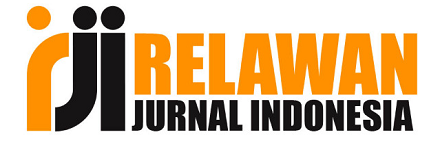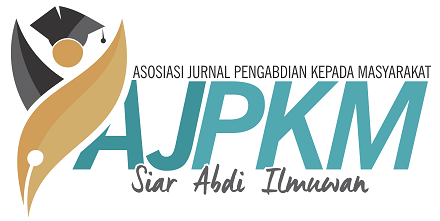Pengenalan ecoprint guna meningkatkan keterampilan siswa dalam pemanfaatan bahan alam
DOI:
https://doi.org/10.33474/jipemas.v4i1.8974Keywords:
ecoprint, skill, natural dyesAbstract
Ecoprint is a technique for printing colors and shapes on fabric using natural materials. Ecoprint techniques have been introduced to junior high school students because they can capture the material and teacher's instructions independently, think critically and creatively. The purpose of the ecoprint introduction activity is to provide knowledge about ecoprint and students' skills in utilizing local potential through natural materials or plants around the school. The methods used are lectures, demonstrations, practice, and evaluation. The questionnaires and direct observations on ecoprint products were used as evaluations for this activity. Students have been able to print motifs and colors from leaves and flowers on a cloth to produce ecoprint products according to their respective creativity.
Â
References
Anzani, S. D., Wignyanto, W., Hindun Pulungan, M., & Rosallina Lutfi, S. (2016). Natural Dye of Soursop Leaf (Annona muricata L.) for Mori Primissima Fabric (Study: Types and Fixation Concentrations). Industria: Jurnal Teknologi Dan Manajemen Agroindustri, 5(3), 132–139. https://doi.org/10.21776/ub.industria.2016.005.03.3
Arif, W. F., & Marsudi. (2019). Uji Coba Warna Daun Sirih Merah dengan Teknik Pounding dan Steam. Journal of Visual Languages & Computing, 7(2), 73–80. https://jurnalmahasiswa.unesa.ac.id/index.php/va/article/view/29246
Atirza, V., & Soewondo, P. (2018). Penyisihan Zat Warna Napthol pada Limbah Cair Batik dengan Metode Adsorpsi Menggunakan Adsorben Tanah Liat dan Regenerasinya. Jurnal Teknik Lingkungan, 24(1), 93–107. https://ftsl.itb.ac.id/wp-content/uploads/sites/8/2020/04/7-93-106-Valerie.pdf
Herlina, M. S., Dartono, F. A., & Setyawan. (2018). Eksplorasi Eco Printing Untuk Produk Sustainable Fashion. Ornamen Jurnal Kriya Seni ISI Surakarta, 15(2), 118–130. https://jurnal.isi-ska.ac.id/index.php/ornamen/article/view/2540/2317
Husna, F. (2016). Eksplorasi Teknik Eco Dyeing dengan Tanaman sebagai Pewarna. E-Proceedin of Art & Design, 3(2), 280–293.
Pudjianti, M. (2019). Ecoprint dan Filosofi Daun (Pertama). Dinas Penerangan Angkatan Laut.
Pujilestari, T. (2014). Pengaruh Ekstraksi Zat Warna Alam dan Fiksasi terhadap Ketahanan Luntur Warna pada Kain Batik Katun. Dinamika Kerajinan Dan Batik: Majalah Ilmiah, 31(1), 31–40. https://doi.org/10.22322/dkb.v31i1.1058
Saptutyningsih, E., & Wardani, D. T. K. (2019). Pemanfaatan Bahan Alami Untuk Pengembangan Produk Ecoprint Di Dukuh Iv Cerme, Panjatan, Kabupaten Kulonprogo. Warta LPM, 21(2), 18–26. https://doi.org/10.23917/warta.v21i2.6761
Saraswati, T. J., & Sulandjari, S. (2018). Perbedaan Hasil Rok Pias Eco Print Daun Jati (Tectona grandis) Menggunakan Jenis dan Massa Mordan Tawas dan Cuka. E-Journal Unesa, 7(2), 1–7. https://jurnalmahasiswa.unesa.ac.id/index.php/jurnal-tata-busana/article/view/24723
Utaminingsih, A., & Wike. (2019). Pelatihan Ecoprint bagi Kader PKK Di Desa Tegalweru, Kecamatan Dau, Kabupaten Malang. 28–32.
Wirawan, B. D. S., & Alvin, M. (2019). Teknik Pewarnaan Alam Eco Print Daun Ubi dengan Penggunaan Fiksator Kapur, Tawas dan Tunjung. Jurnal Litbang Kota Pekalongan, 17, 1–5. https://jurnal.pekalongankota.go.id/index.php/litbang/article/view/101
Downloads
Published
How to Cite
Issue
Section
License
.









